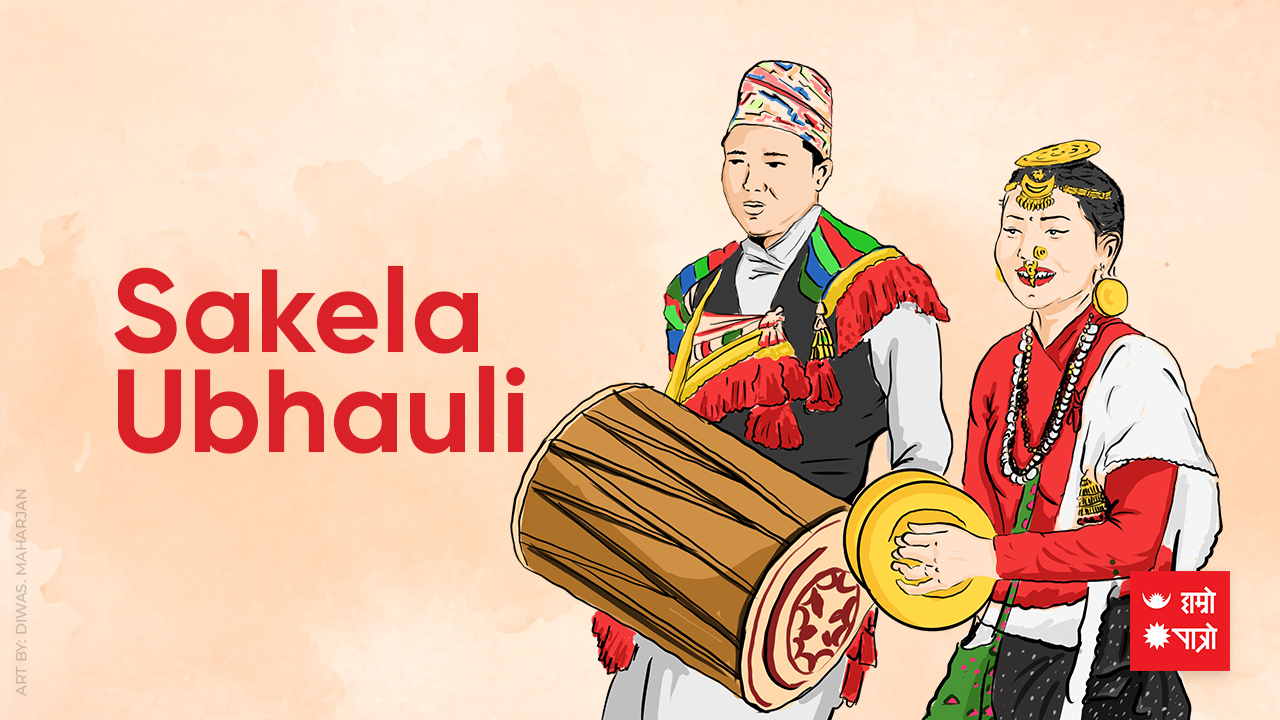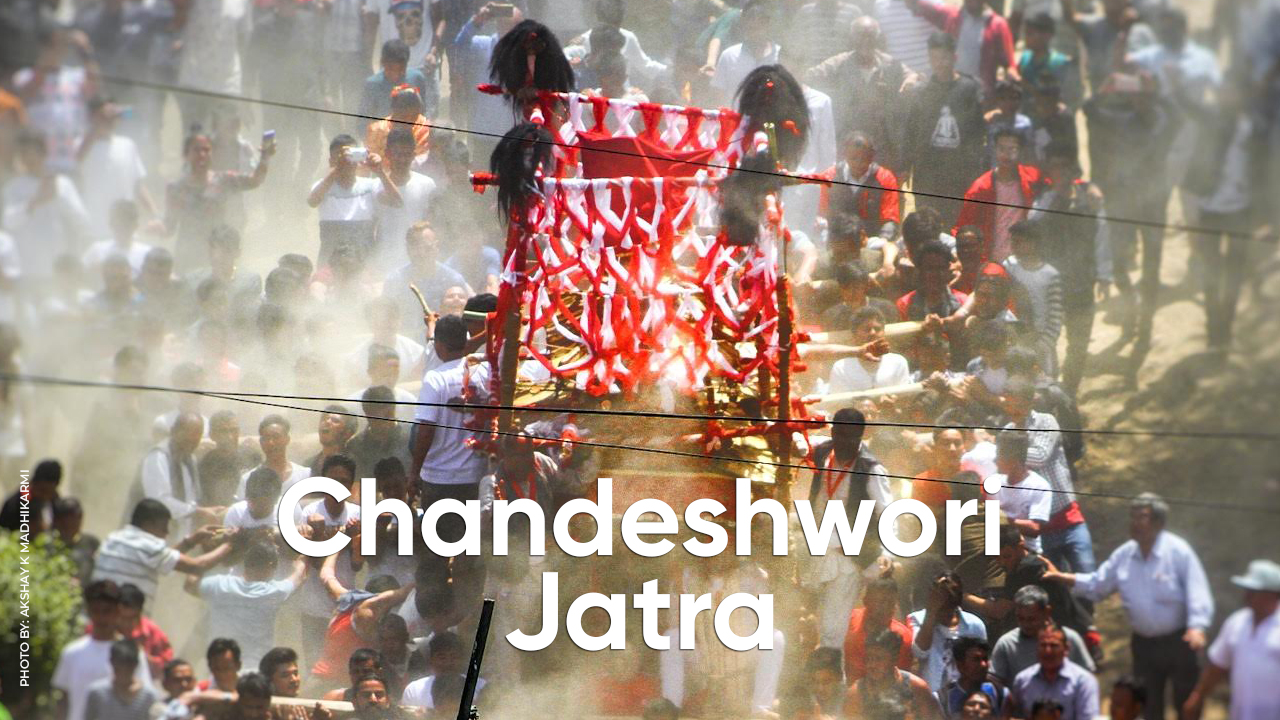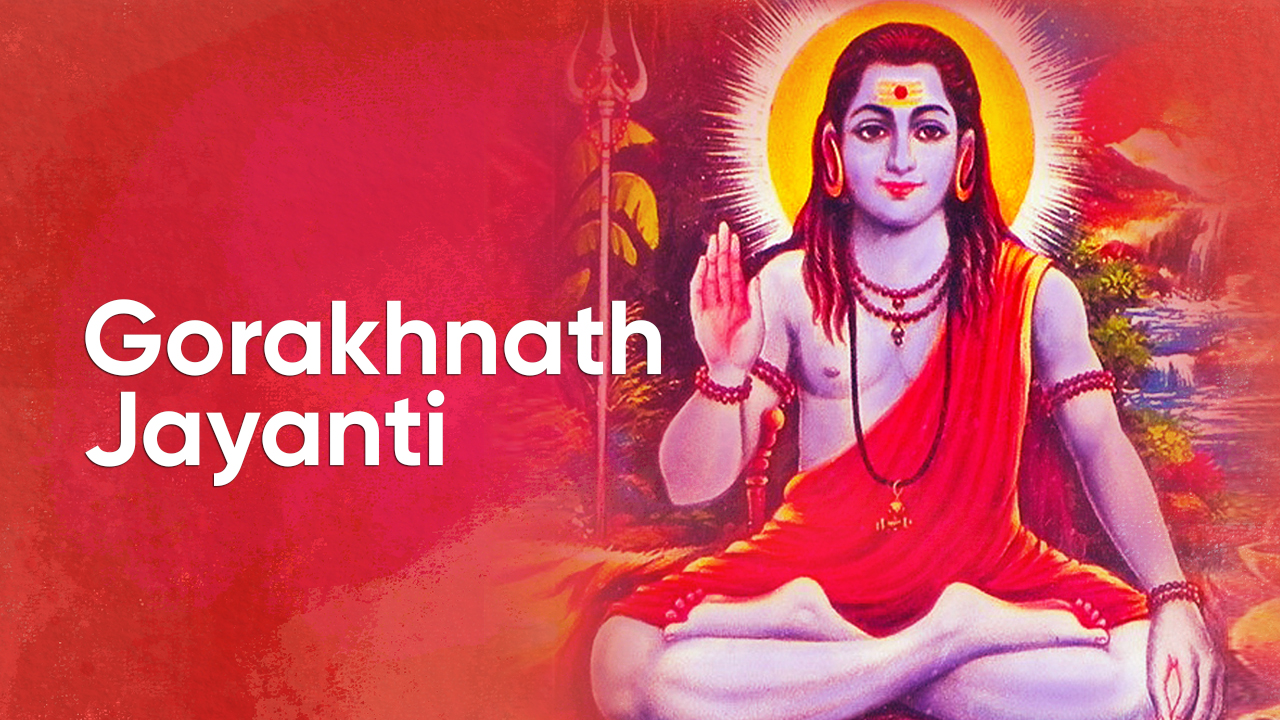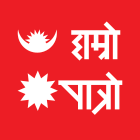Upcomming Events
-
29MangsirSafala Ekadashi Vrata tomorrow
-
1PaushDhanu Sankranti 2 days remaning
-
2PaushPradosh Vrata 3 days remaning
-
3PaushInternational Immigrants Day 4 days remaning
-
5PaushTol Lhosar 6 days remaning
-
6PaushWorld Meditation Day 7 days remaning
-
10PaushChristmas 11 days remaning
-
13PaushGorakhkali Puja 14 days remaning
-
15PaushTamu Lhosar/Kavi Siromani Lekhnath Jayanti/Putrada Ekadashi Vrata 16 days remaning
-
17PaushNew Year 2026/Pradosh Vrata/Topi Day/Poshak Day 18 days remaning
-
19PaushSri Swasthani Vrata Katha Prarambha/Maagh Snan/Poornima Vrata 20 days remaning
-
21PaushGuru Gobinda Singh Jayanti 22 days remaning
-
23PaushAraniko Smriti Day 24 days remaning
-
24PaushNepal Astrology Council Establishment Day 25 days remaning
-
27PaushPrithivi Jayanti/Rashtriya Ekata Diwas/Gorakhkali Puja 28 days remaning
-
29PaushNational Bhakka Day 30 days remaning
-
30PaushShattila Ekadashi 31 days remaning
-
1MaghMakar Sankranti/Ghiu chaku khane Din/Uttarayan Arambha 32 days remaning
-
2MaghNational Earthquake Safety Day/Pradosh Vrata 33 days remaning
-
5MaghSonam Lhochhar/Shree Ballav Jayanti 36 days remaning
-
8MaghTilkunda Chauthi 39 days remaning
-
9MaghBasanta Panchami vrata/Saraswati Pooja 40 days remaning
-
10MaghSkanda Sasti/Achala Saptami/International Day of Education 41 days remaning
-
11MaghGorakhkali Puja/World Leprosy Day 42 days remaning
-
12MaghInternational Custom Day 43 days remaning
-
13MaghDron Nawami 44 days remaning
-
15MaghBhima Ekadashi Vrata 46 days remaning
-
16MaghSahid Diwas/Pradosh Vrata 47 days remaning
-
18MaghShree Swasthani Brata Samapti/Poornima Wrata 49 days remaning
-
19MaghWorld Wetlands Day 50 days remaning
-
21MaghWorld Cancer Day 52 days remaning
-
25MaghRavisaptami Vrata 56 days remaning
-
26MaghGorakhkali Puja 57 days remaning
-
28MaghInternational Day of Women and Girls in Science/Safer Internet Day 59 days remaning
-
1FalgunKumbha Sankranti/Bijaya Ekadashi Vrata/World Radio Day 61 days remaning
-
2FalgunShani Pradosh Vrata/Valentine's Day 62 days remaning
-
3FalgunMaha-Shivaratri / Army Day/Silachahre Puja 63 days remaning
-
6FalgunGyalpo Lhosar 66 days remaning
-
7FalgunPrajatantra Diwas / Election Day 67 days remaning
-
8FalgunWorld Day of Social Justice 68 days remaning
Jyotish
-
 Jyotish Mukunda Sharmaस्वाध्याय, सत्सङ्ग र सदाचारजस�...
Jyotish Mukunda Sharmaस्वाध्याय, सत्सङ्ग र सदाचारजस�...
-
Jyotish Vaman Sapkotaशिक्षा - व्याकरणाचार्य, पौरोही...
-
Jyotish Pandit Mukunda Nepalज्योतिष पण्डित मुकुन्द नेपाल�...
-
Jyotish Mohan Ghimireसम्पुर्णानन्द संस्कृत विश्वव...
-
Jyotish Damodar Poudelनेपाल संस्कृत विश्व बिद्यालय�...
-
Jyotish Amrit Paudelवाराणसीकै सम्पूर्णानन्द संस्...
-
Jyotish Purushottam Ghimireनेपाल संस्कृत विश्वविद्यालय, �...
-
Jyotish Smarika Acharyaबाल्मीकि बिद्यापिठ बाट ज्योत�...
-
Jyotish Narayan Prasad Bhandariज्योतिषका उप-प्राध्यापक (lecturer of A...
-
Jyotish Krishna Prasad Bhandariउपप्राध्यापक (Asst. professor of Sanskrit) नेपा�...
-
 Jyotish Dharmendra Krishna Paudelशास्त्री धर्मेन्द्र कृष्ण पौ�...
Jyotish Dharmendra Krishna Paudelशास्त्री धर्मेन्द्र कृष्ण पौ�...
-
Jyotish Dipendra Khatiwadaसम्पुर्णानन्द संस्कृत बिश्वब...
-
Jyotish Narayan Prasad Gautamगुरुकुल शिक्षा प्रणालीबाट ज्�...
-
 Jyotish Kuresh Pandey११ वर्षको अनुभवसहित विभिन्न ध�...
Jyotish Kuresh Pandey११ वर्षको अनुभवसहित विभिन्न ध�...
-
Jyotish Deepak Prasad Kafleसम्पूर्णानन्द संस्कृत विश्वव...
-
Jyotish Damodar Kaushikज्योतिष र व्याकरण विषयमा आचार�...
-
Jyotish Ghanashyam Pokharelनेपाल संस्कृत विश्वविद्यालयब...
-
Jyotish Khageshwor Subediगुरुकुल पद्दति बाट ज्योतिषीय �...
-
Acharya Choodamani Pathakसम्पूर्णानन्दसंस्कृत विश्वव�...
-
Jyotish Dr. Janak Bhattaविगत ३५ वर्षदेखि कुण्डली निर्�...
-
Jyotish Khagendra Subediसम्पूर्णानंद संस्कृत विश्ववि...
Hororscope
वैशाख शुक्ल पूर्णिमा
Buddha Jayanti । Ubhauli Parwa । Chandeshwori Jatra । Chandi Poornima । Kurma Jayanti । Gorakhnath Jayanti । Poornima Vrata । Baisakh Snan Samapti

What is the meaning of the word "Budhha"?
The Sanskrit word Buddha meaning awakening or the awakened. Buddha, a great personality, teacher, philosopher, governess, and guide, completely awakened from the desires of worldly attachments. Such a great teacher who in his discourse helped to awaken people from worldly lusts and tensions by recognizing religion and law in the world rather than saying that God created the world.The Buddha, who taught to sow the seeds of truth and peace in the field of the heart, was born in 543 BC in the middle of a saline orchard in the present-day Kapilvastu district of Nepal. Today, the world has followed the Buddha's ideals.
Budhha's birth
The Buddha is the master of the world for peace, truth, non-violence, and simplicity. The incessant flow of his knowledge more than 2500 years ago has given a new calm dimension to the human community. Let's discuss this great man Gautam Buddha on the day of Baishakh Shukla Purnima, i.e. Buddha Jayanti. This Baishakh Shukla Purnima is of great importance in the life of Gautam Buddha. His birth, attainment of knowledge, and Samadhi took place on this Baishakh Purnima day.
Today, Buddha Jayanti is celebrated in its way from the North to the South Pole of the world, from the Dead Sea to the Marianas Trench in the Pacific Ocean, and from Benaras to Beijing. Even though the physical body is destroyed, the Buddha is still present in the minds of all of us through his knowledge, words, and spiritual skills.
Life story of Gautam Budhha.
The real name of the Buddha is Siddhartha Gautama and it is said that he walked 7 steps to the north with his birth and pointed his finger towards the wind. According to this, he is considered to be the great soul and the last incarnation of God on earth. This pool, which was bathed by Siddhartha Gautam, is called Siddhartha Kunda, his mother died tragically after 7 days of Buddha's birth. However, the highly disciplined and dignified prince Siddhartha Gautam married Yashodhara at the age of 16. At the age of 29, Siddhartha Gautama, who had the habit of showing deep affection to all living beings and creatures, left all comforts and set out in pursuit of knowledge and reasons.
This prince was in search of knowledge to alleviate the pain and suffering of human life, and the philosophy and knowledge gained by his penance years later is the Buddhist manifest. On the path to enlightenment, Siddhartha Gautama observed the condition of the sick, the wounded, the greedy, as well as the people who became monks by donating everything to others.
After that, Siddhartha Gautama, who decided to become a monk, is the Gautama Buddha in the world today. Thus, searching for the cause of worldly misery, he left home at the age of 29 and took penance under a tree at a place called Bodh Gaya.During his penance, Buddha attained Samyak Samvodhi, that is, great knowledge. In the years that followed, he shared the same knowledge and was called Lord Buddha all over the world.
samyak sambuddha
Buddhism is not only an atheistic religion but also a philosophy of non-violence, iniquity, and untruth, a universal philosophy. This religion is based on the teachings of Gautama Buddha and his followers under Shakyamuni. Gautama Buddha is considered to be the fourth samyak sambuddha of the present age. Buddhism is practiced by over 350 million people worldwide and is the fourth largest religion in the world. Nepal is also called the land of peace as the origin of this Buddha philosophy is spread all over the world. Therefore, various countries around the world have built wonderful temples and monasteries in the birthplace of the Buddha today.
Buddha attained Nirvana at the age of 80. He attained enlightenment after intense ascetic meditation at Bodh Gaya. The collection of all the teachings and teachings of Buddhism is called Tripitaka. The Tripitaka describes in detail the 32 physical qualities of Buddhism.
There are 84,000 Gyan Sutras, including 82,000 from Buddha and 2,000 from his chief disciples. The main philosophical principle of Buddhism is pratitya (samutpada), the basic virtues of impermanence, misery, and selflessness are considered to be the basic principles of Buddhism.
Gautama Buddha is considered by Hindus to be one of the ten incarnations of Lord Vishnu. Gautam Buddha is also called the star of Asia. As Buddha was born in Nepal, the Government of Nepal has been giving public leave every year on the occasion of Buddha Jayanti.
Buddha means a great man who has attained enlightenment or has recognized the ultimate truth. If the Buddha's knowledge is absorbed, the earth will be a wonderful planet, the world needs another Buddha, come back Shakyamuni, bring the message of peace. Happy Buddha Jayanti
Ubhauli festival
And how ready are you to dance Sakela Chandi in the midst of this?
Chandi Dance
Chandi dance, which is very popular in the Kirant community, is danced wishing good health, longevity, and prosperity to all.Let's talk about the spring festival of Uvauuli celebrated by the world-famous Kirant community, the descendants of nature. Priests of Nature and warriors of truth, Kirant community celebrates this auspicious festival on the full moon day of Baishakh with the wishes to harvest adequate grains, adequate rainfall, and peace across the world. Since Chandi dance is performed today, it is also called Chandi Purnima, Chandi Purnima is a joyful expression upon the creation of Sumnima, Kirant form of Parwati. There are two agriculture-oriented festivals which are all about agriculture and guardianship. 
These two festivals (Ubhauli and Udhauli) are celebrated by the Kirant community. Ubhauli is celebrated on the full moon of Vaishakh and Udhauli on the full moon of Mangsir. Ubhuli is celebrated as an opportunity to plant crops and to thrive. In Uvauli, Sumnima and Paruhang are believed to protect the entire universe. This festival started from Baishakh Shukla Purnima and is celebrated continuously for one month.Happy Uvauli festival to the Kirant community all over the world, may this year's Chandi dance do good to all.
Chandeshwori Jatra/ Chandeshwori Poornima
Chandeshwori Jatra is celebrated grandly from two days of Baishakh Shukla Purnima.The Chandeshwori Jatra has officially started today. Especially in the city of Banepa near Kathmandu and the surrounding area, the procession is super lively. From Baisakh Poornima, this Jatra kicks off.In this procession, it is customary to take the chariot with Bajagaja to Chandeshwori and return the next day with the idol of the goddess in the chariot.
Another highlight of the Jatra is the Kalandan. In the Jatra, it is customary to throw animal meat as offerings to the crowd of devotees, these offerings are considered Kalandan. Anyone who gets a piece of meat thrown in the crowd is considered lucky. People from Dolakha, Lalitpur, Bhaktapur, Kathmandu, Ramechhap, and other places come to participate in this ancient procession.
The subject of the origin of the goddess Chandeshwori is connected with a demon named Chandasur, it is said that Chandeshwori killed Chandasur in the form of a goddess after he started causing trouble after receiving a boon from Lord Mahadev.The joy of Chandasur's death is said to be the highlight of this procession. Chandeshwari is considered as the deity of the Newa community around Banepa, after the slaying of Chandasur, Chandeshwori was welcomed in Devlok with specific arrangements and it is said that this procession was started from Satya Yuga with the same happiness. This pilgrimage is an immaculate example of eternal rites and ancient civilization.At least 14 sacrifices are performed in the procession. It is customary for the Newari community to invite relatives to a feast after the procession.
On the day before the procession, which is celebrated for two days on Baisakh Shuklapurni and the next day, it is customary to worship the ornaments and coins used by the then, King Maharaj. Apart from Chandeshwari Jatra, Bhagwati Mahalakshmi's procession is held in Ugrachandi Nala in Kavre district, Nasika Bhagwati's procession in Sanga, Shwetaganesh's procession in Chaukot, Shweta Bhairab's procession in Shrikhandpur and Indreshwar's procession in Panauti.
Congratulations to all on this year's Chandeshwari Jatra, may Chandeshwori come in every age to kill the Chandasuras. May religion prevails, may iniquity be.
Kurma Jayanti
What is the Kurma form of Lord Bishnu?
The tortoise form of Vishnu is called Kurma.
Why is Kurma Jayanti observed?
Kurma Jayanti falls on the full moon of Baishakh Shukla Paksha. It is said that this Kurma incarnation carried the Madranchal mountain on his back during Kshir Sagar Manthan. The first incarnation of Vishnu is the fish incarnation (Matsya Avataar), while the second incarnation is the Kurma incarnation. Vishnu is believed to have appeared in the incarnation of Kurma, which can be reasonably present in both water and land. It is customary to fast on this day, to stay awake one day in advance, to recite Vishnu Sahasranama, and to recite other Vedic mantras.
It is also believed that giving alms on this day is very beneficial.
Due to the belief in the presence of Yogamaya in the Kurma incarnation, it is considered especially fruitful to start construction works, arts, and crafts today.
GorakhNath Jayanti
Who is Guru Gorakhnath ?
On the day of Baishakh Shukla Purnima, many great men have appeared on this earth. Guru Gorakhnath is one of these great men and Siddhayogis.
There are many important dimensions to this holy day, the birth of this great Siddha Yogi, the founder of the Nath sect. Guru Matsyendranath, born in Bungmati, Nepal, is a most followed guru of the people of Kathmandu, a contemporary deity and a perfect teacher.Guru Gorakhnath came to earth as the son and disciple of this perfect Guru, Guru Matsyedrnath. Followers of Gorakhnath Math do not believe in Guru Gorakhnath Jayanti or the birth and death of Guru Gorakhnath, according to them, Gorakhnath Guru is a perfect Guru from eternity who is completely different from the cycle of life and death.
Nepali Royal family and Guru Gorakhnath
There are statements that the royal family of Nepal is also pleased with the grace of Guru Gorakhnath. The name of the Gorkha state also coincides with Gorakhnath. Even the statements given to Prithvi Narayan Shah by Guru Gorakhnath before the unification are still heard today.According to the Nath sect, Vishnu found only water around him when he wished to create, and after meeting Guru Gorakhnath in Patala and scattering the ashes given by Gorakhnath in the water, there is a statement that the glory of that ashes fell to the ground and created land. The meaning of Gorakh is understood to be the protection of the earth.
Guru Gorakhnath has made a remarkable contribution in protecting the Sanatan culture and advancing the awakening by simplifying the teachings of Adinath Mahadev.
According to Gargasahinta, Mahadev himself had said this
अहमेवास्मि गोरक्षो मद्रूपं तन्निबोधत।
योग मार्ग प्रचाराय मयारूपमिदं धृतम्
That is, I am Goraksh, to know Goraksh as my own form, I undertook this form for the propagation of the yoga path.
Many good wishes to all on the occasion of the birth anniversary of the great Guru Gorakhnath, who has attained complete mastery and perfection over the true form and nature of Shiva.
Poornima Vrata
When is Poornima?
The last day of Shukla Paksha is the full moon day. On this tithi, the moon is the brightest and magnificent. It is believed that fasting on this day brings immense lunar grace to health, prosperity, and peace. On the full moon day, Lord Shiva and Vishnu are especially worshiped. Special worship to Lord Vishnu is done in the form of Satya Narayan Puja. Satya Narayan Puja is usually performed whenever possible, although the fruits of this puja performed on the day of the full moon are very abundant.
From a scientific point of view, it is said that gravity will have a great effect on the earth on the day of the full moon and self-purification will be done by fasting on this day and remembering the name of God. By fasting on this day, the metabolic process will be strengthened, gastric problems will be solved and positive energy will increase in the body.
This day is fasted from sunrise in the morning to moonrise in the evening. Some people observe this fast without drinking water, while others observe this fast by eating only one meal and eating no salt (alino) food. In the evening, after the moonrise, the fast ends with the sighting of the moon. Happy Shukla Purnima to everyone .
Let there be an end to the flood and landslide, let there be the protection of both religion and the followers of religion.
Baisakh Snan ends
न माधवसमो मासों न कृतेन युगं समम्।
न च वेदसमं शास्त्रं न तीर्थं गंगया समम्।।
स्कंदपुराण, वै वै मा. 2/1
That is, there is no month like Vaishakh, no age like Satya Yuga, no scripture like Veda, and no pilgrimage like Gangaji. Baisakhi bath is formally concluding from today.
-Suyog Dhakal
Upcomming Events
-
29MangsirSafala Ekadashi Vrata tomorrow
-
1PaushDhanu Sankranti 2 days remaning
-
2PaushPradosh Vrata 3 days remaning
-
3PaushInternational Immigrants Day 4 days remaning
-
5PaushTol Lhosar 6 days remaning
-
6PaushWorld Meditation Day 7 days remaning
-
10PaushChristmas 11 days remaning
-
13PaushGorakhkali Puja 14 days remaning
-
15PaushTamu Lhosar/Kavi Siromani Lekhnath Jayanti/Putrada Ekadashi Vrata 16 days remaning
-
17PaushNew Year 2026/Pradosh Vrata/Topi Day/Poshak Day 18 days remaning
-
19PaushSri Swasthani Vrata Katha Prarambha/Maagh Snan/Poornima Vrata 20 days remaning
-
21PaushGuru Gobinda Singh Jayanti 22 days remaning
-
23PaushAraniko Smriti Day 24 days remaning
-
24PaushNepal Astrology Council Establishment Day 25 days remaning
-
27PaushPrithivi Jayanti/Rashtriya Ekata Diwas/Gorakhkali Puja 28 days remaning
-
29PaushNational Bhakka Day 30 days remaning
-
30PaushShattila Ekadashi 31 days remaning
-
1MaghMakar Sankranti/Ghiu chaku khane Din/Uttarayan Arambha 32 days remaning
-
2MaghNational Earthquake Safety Day/Pradosh Vrata 33 days remaning
-
5MaghSonam Lhochhar/Shree Ballav Jayanti 36 days remaning
-
8MaghTilkunda Chauthi 39 days remaning
-
9MaghBasanta Panchami vrata/Saraswati Pooja 40 days remaning
-
10MaghSkanda Sasti/Achala Saptami/International Day of Education 41 days remaning
-
11MaghGorakhkali Puja/World Leprosy Day 42 days remaning
-
12MaghInternational Custom Day 43 days remaning
-
13MaghDron Nawami 44 days remaning
-
15MaghBhima Ekadashi Vrata 46 days remaning
-
16MaghSahid Diwas/Pradosh Vrata 47 days remaning
-
18MaghShree Swasthani Brata Samapti/Poornima Wrata 49 days remaning
-
19MaghWorld Wetlands Day 50 days remaning
-
21MaghWorld Cancer Day 52 days remaning
-
25MaghRavisaptami Vrata 56 days remaning
-
26MaghGorakhkali Puja 57 days remaning
-
28MaghInternational Day of Women and Girls in Science/Safer Internet Day 59 days remaning
-
1FalgunKumbha Sankranti/Bijaya Ekadashi Vrata/World Radio Day 61 days remaning
-
2FalgunShani Pradosh Vrata/Valentine's Day 62 days remaning
-
3FalgunMaha-Shivaratri / Army Day/Silachahre Puja 63 days remaning
-
6FalgunGyalpo Lhosar 66 days remaning
-
7FalgunPrajatantra Diwas / Election Day 67 days remaning
-
8FalgunWorld Day of Social Justice 68 days remaning
Jyotish
-
 Jyotish Mukunda Sharmaस्वाध्याय, सत्सङ्ग र सदाचारजस�...
Jyotish Mukunda Sharmaस्वाध्याय, सत्सङ्ग र सदाचारजस�...
-
Jyotish Vaman Sapkotaशिक्षा - व्याकरणाचार्य, पौरोही...
-
Jyotish Pandit Mukunda Nepalज्योतिष पण्डित मुकुन्द नेपाल�...
-
Jyotish Mohan Ghimireसम्पुर्णानन्द संस्कृत विश्वव...
-
Jyotish Damodar Poudelनेपाल संस्कृत विश्व बिद्यालय�...
-
Jyotish Amrit Paudelवाराणसीकै सम्पूर्णानन्द संस्...
-
Jyotish Purushottam Ghimireनेपाल संस्कृत विश्वविद्यालय, �...
-
Jyotish Smarika Acharyaबाल्मीकि बिद्यापिठ बाट ज्योत�...
-
Jyotish Narayan Prasad Bhandariज्योतिषका उप-प्राध्यापक (lecturer of A...
-
Jyotish Krishna Prasad Bhandariउपप्राध्यापक (Asst. professor of Sanskrit) नेपा�...
-
 Jyotish Dharmendra Krishna Paudelशास्त्री धर्मेन्द्र कृष्ण पौ�...
Jyotish Dharmendra Krishna Paudelशास्त्री धर्मेन्द्र कृष्ण पौ�...
-
Jyotish Dipendra Khatiwadaसम्पुर्णानन्द संस्कृत बिश्वब...
-
Jyotish Narayan Prasad Gautamगुरुकुल शिक्षा प्रणालीबाट ज्�...
-
 Jyotish Kuresh Pandey११ वर्षको अनुभवसहित विभिन्न ध�...
Jyotish Kuresh Pandey११ वर्षको अनुभवसहित विभिन्न ध�...
-
Jyotish Deepak Prasad Kafleसम्पूर्णानन्द संस्कृत विश्वव...
-
Jyotish Damodar Kaushikज्योतिष र व्याकरण विषयमा आचार�...
-
Jyotish Ghanashyam Pokharelनेपाल संस्कृत विश्वविद्यालयब...
-
Jyotish Khageshwor Subediगुरुकुल पद्दति बाट ज्योतिषीय �...
-
Acharya Choodamani Pathakसम्पूर्णानन्दसंस्कृत विश्वव�...
-
Jyotish Dr. Janak Bhattaविगत ३५ वर्षदेखि कुण्डली निर्�...
-
Jyotish Khagendra Subediसम्पूर्णानंद संस्कृत विश्ववि...
Hororscope
Liked by:




















 Mesh
Mesh Brish
Brish Mithun
Mithun Karkat
Karkat  Singha
Singha  Kanya
Kanya Tula
Tula Brischik
Brischik Dhanu
Dhanu  Makar
Makar  Kumbha
Kumbha Meen
Meen